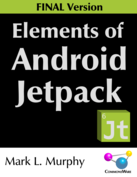Here is what we got in this wave:
androidx.activity:activity:1.12.0-alpha04androidx.activity:activity-compose:1.12.0-alpha04androidx.activity:activity-ktx:1.12.0-alpha04androidx.appsearch:appsearch:1.1.0androidx.appsearch:appsearch-builtin-types:1.1.0androidx.appsearch:appsearch-compiler:1.1.0androidx.appsearch:appsearch-debug-view:1.1.0androidx.appsearch:appsearch-external-protobuf:1.1.0androidx.appsearch:appsearch-ktx:1.1.0androidx.appsearch:appsearch-local-storage:1.1.0androidx.appsearch:appsearch-platform-storage:1.1.0androidx.appsearch:appsearch-play-services-storage:1.1.0androidx.browser:browser:1.9.0-beta01androidx.compose:compose-bom-alpha:2025.06.02androidx.compose:compose-bom-beta:2025.06.02androidx.compose.animation:animation:1.9.0-beta02androidx.compose.animation:animation-android:1.9.0-beta02androidx.compose.animation:animation-core:1.9.0-beta02androidx.compose.animation:animation-core-android:1.9.0-beta02androidx.compose.animation:animation-core-jvmstubs:1.9.0-beta02androidx.compose.animation:animation-core-lint:1.9.0-beta02androidx.compose.animation:animation-core-linuxx64stubs:1.9.0-beta02androidx.compose.animation:animation-graphics:1.9.0-beta02androidx.compose.animation:animation-graphics-android:1.9.0-beta02androidx.compose.animation:animation-graphics-jvmstubs:1.9.0-beta02androidx.compose.animation:animation-graphics-linuxx64stubs:1.9.0-beta02androidx.compose.animation:animation-jvmstubs:1.9.0-beta02androidx.compose.animation:animation-lint:1.9.0-beta02androidx.compose.animation:animation-linuxx64stubs:1.9.0-beta02androidx.compose.animation:animation-tooling-internal:1.9.0-beta02androidx.compose.foundation:foundation:1.9.0-beta02androidx.compose.foundation:foundation-android:1.9.0-beta02androidx.compose.foundation:foundation-jvmstubs:1.9.0-beta02androidx.compose.foundation:foundation-layout:1.9.0-beta02androidx.compose.foundation:foundation-layout-android:1.9.0-beta02androidx.compose.foundation:foundation-layout-jvmstubs:1.9.0-beta02androidx.compose.foundation:foundation-layout-linuxx64stubs:1.9.0-beta02androidx.compose.foundation:foundation-lint:1.9.0-beta02androidx.compose.foundation:foundation-linuxx64stubs:1.9.0-beta02androidx.compose.material:material:1.9.0-beta02androidx.compose.material3:material3:1.4.0-alpha17androidx.compose.material3:material3-adaptive-navigation-suite:1.4.0-alpha17androidx.compose.material3:material3-adaptive-navigation-suite-android:1.4.0-alpha17androidx.compose.material3:material3-adaptive-navigation-suite-jvmstubs:1.4.0-alpha17androidx.compose.material3:material3-android:1.4.0-alpha17androidx.compose.material3:material3-jvmstubs:1.4.0-alpha17androidx.compose.material3:material3-lint:1.4.0-alpha17androidx.compose.material3:material3-linuxx64stubs:1.4.0-alpha17androidx.compose.material3:material3-window-size-class:1.4.0-alpha17androidx.compose.material3:material3-window-size-class-android:1.4.0-alpha17androidx.compose.material3:material3-window-size-class-jvmstubs:1.4.0-alpha17androidx.compose.material3:material3-window-size-class-linuxx64stubs:1.4.0-alpha17androidx.compose.material3.adaptive:adaptive:1.2.0-alpha08androidx.compose.material3.adaptive:adaptive-android:1.2.0-alpha08androidx.compose.material3.adaptive:adaptive-jvmstubs:1.2.0-alpha08androidx.compose.material3.adaptive:adaptive-layout:1.2.0-alpha08androidx.compose.material3.adaptive:adaptive-layout-android:1.2.0-alpha08androidx.compose.material3.adaptive:adaptive-layout-jvmstubs:1.2.0-alpha08androidx.compose.material3.adaptive:adaptive-layout-linuxx64stubs:1.2.0-alpha08androidx.compose.material3.adaptive:adaptive-linuxx64stubs:1.2.0-alpha08androidx.compose.material3.adaptive:adaptive-navigation:1.2.0-alpha08androidx.compose.material3.adaptive:adaptive-navigation-android:1.2.0-alpha08androidx.compose.material3.adaptive:adaptive-navigation-jvmstubs:1.2.0-alpha08androidx.compose.material3.adaptive:adaptive-navigation-linuxx64stubs:1.2.0-alpha08androidx.compose.runtime:runtime:1.9.0-beta02androidx.compose.runtime:runtime-android:1.9.0-beta02androidx.compose.runtime:runtime-annotation:1.9.0-beta02androidx.compose.runtime:runtime-annotation-android:1.9.0-beta02androidx.compose.runtime:runtime-annotation-iosarm64:1.9.0-beta02androidx.compose.runtime:runtime-annotation-iossimulatorarm64:1.9.0-beta02androidx.compose.runtime:runtime-annotation-iosx64:1.9.0-beta02androidx.compose.runtime:runtime-annotation-js:1.9.0-beta02androidx.compose.runtime:runtime-annotation-jvm:1.9.0-beta02androidx.compose.runtime:runtime-annotation-linuxarm64:1.9.0-beta02androidx.compose.runtime:runtime-annotation-linuxx64:1.9.0-beta02androidx.compose.runtime:runtime-annotation-macosarm64:1.9.0-beta02androidx.compose.runtime:runtime-annotation-macosx64:1.9.0-beta02androidx.compose.runtime:runtime-annotation-mingwx64:1.9.0-beta02androidx.compose.runtime:runtime-annotation-tvosarm64:1.9.0-beta02androidx.compose.runtime:runtime-annotation-tvossimulatorarm64:1.9.0-beta02androidx.compose.runtime:runtime-annotation-tvosx64:1.9.0-beta02androidx.compose.runtime:runtime-annotation-wasm-js:1.9.0-beta02androidx.compose.runtime:runtime-annotation-watchosarm32:1.9.0-beta02androidx.compose.runtime:runtime-annotation-watchosarm64:1.9.0-beta02androidx.compose.runtime:runtime-annotation-watchosdevicearm64:1.9.0-beta02androidx.compose.runtime:runtime-annotation-watchossimulatorarm64:1.9.0-beta02androidx.compose.runtime:runtime-annotation-watchosx64:1.9.0-beta02androidx.compose.runtime:runtime-desktop:1.9.0-beta02androidx.compose.runtime:runtime-iosarm64:1.9.0-beta02androidx.compose.runtime:runtime-iossimulatorarm64:1.9.0-beta02androidx.compose.runtime:runtime-iosx64:1.9.0-beta02androidx.compose.runtime:runtime-js:1.9.0-beta02androidx.compose.runtime:runtime-lint:1.9.0-beta02androidx.compose.runtime:runtime-linuxarm64:1.9.0-beta02androidx.compose.runtime:runtime-linuxx64:1.9.0-beta02androidx.compose.runtime:runtime-livedata:1.9.0-beta02androidx.compose.runtime:runtime-macosarm64:1.9.0-beta02androidx.compose.runtime:runtime-macosx64:1.9.0-beta02androidx.compose.runtime:runtime-mingwx64:1.9.0-beta02androidx.compose.runtime:runtime-rxjava2:1.9.0-beta02androidx.compose.runtime:runtime-rxjava3:1.9.0-beta02androidx.compose.runtime:runtime-saveable:1.9.0-beta02androidx.compose.runtime:runtime-saveable-android:1.9.0-beta02androidx.compose.runtime:runtime-saveable-jvmstubs:1.9.0-beta02androidx.compose.runtime:runtime-saveable-lint:1.9.0-beta02androidx.compose.runtime:runtime-saveable-linuxx64stubs:1.9.0-beta02androidx.compose.runtime:runtime-tracing:1.9.0-beta02androidx.compose.runtime:runtime-tvosarm64:1.9.0-beta02androidx.compose.runtime:runtime-tvossimulatorarm64:1.9.0-beta02androidx.compose.runtime:runtime-tvosx64:1.9.0-beta02androidx.compose.runtime:runtime-wasm-js:1.9.0-beta02androidx.compose.runtime:runtime-watchosarm32:1.9.0-beta02androidx.compose.runtime:runtime-watchosarm64:1.9.0-beta02androidx.compose.runtime:runtime-watchosdevicearm64:1.9.0-beta02androidx.compose.runtime:runtime-watchossimulatorarm64:1.9.0-beta02androidx.compose.runtime:runtime-watchosx64:1.9.0-beta02androidx.compose.ui:ui:1.9.0-beta02androidx.compose.ui:ui-android:1.9.0-beta02androidx.compose.ui:ui-android-stubs:1.9.0-beta02androidx.compose.ui:ui-geometry:1.9.0-beta02androidx.compose.ui:ui-geometry-android:1.9.0-beta02androidx.compose.ui:ui-geometry-jvmstubs:1.9.0-beta02androidx.compose.ui:ui-geometry-linuxx64stubs:1.9.0-beta02androidx.compose.ui:ui-graphics:1.9.0-beta02androidx.compose.ui:ui-graphics-android:1.9.0-beta02androidx.compose.ui:ui-graphics-jvmstubs:1.9.0-beta02androidx.compose.ui:ui-graphics-lint:1.9.0-beta02androidx.compose.ui:ui-graphics-linuxx64stubs:1.9.0-beta02androidx.compose.ui:ui-jvmstubs:1.9.0-beta02androidx.compose.ui:ui-lint:1.9.0-beta02androidx.compose.ui:ui-linuxx64stubs:1.9.0-beta02androidx.compose.ui:ui-test:1.9.0-beta02androidx.compose.ui:ui-test-accessibility:1.9.0-beta02androidx.compose.ui:ui-test-accessibility-android:1.9.0-beta02androidx.compose.ui:ui-test-android:1.9.0-beta02androidx.compose.ui:ui-test-junit4:1.9.0-beta02androidx.compose.ui:ui-test-junit4-accessibility:1.9.0-beta02androidx.compose.ui:ui-test-junit4-accessibility-android:1.9.0-beta02androidx.compose.ui:ui-test-junit4-android:1.9.0-beta02androidx.compose.ui:ui-test-junit4-jvmstubs:1.9.0-beta02androidx.compose.ui:ui-test-jvmstubs:1.9.0-beta02androidx.compose.ui:ui-test-linuxx64stubs:1.9.0-beta02androidx.compose.ui:ui-test-manifest:1.9.0-beta02androidx.compose.ui:ui-test-manifest-lint:1.9.0-beta02androidx.compose.ui:ui-text:1.9.0-beta02androidx.compose.ui:ui-text-android:1.9.0-beta02androidx.compose.ui:ui-text-google-fonts:1.9.0-beta02androidx.compose.ui:ui-text-jvmstubs:1.9.0-beta02androidx.compose.ui:ui-text-lint:1.9.0-beta02androidx.compose.ui:ui-text-linuxx64stubs:1.9.0-beta02androidx.compose.ui:ui-tooling:1.9.0-beta02androidx.compose.ui:ui-tooling-android:1.9.0-beta02androidx.compose.ui:ui-tooling-data:1.9.0-beta02androidx.compose.ui:ui-tooling-data-android:1.9.0-beta02androidx.compose.ui:ui-tooling-data-jvmstubs:1.9.0-beta02androidx.compose.ui:ui-tooling-jvmstubs:1.9.0-beta02androidx.compose.ui:ui-tooling-preview:1.9.0-beta02androidx.compose.ui:ui-tooling-preview-android:1.9.0-beta02androidx.compose.ui:ui-tooling-preview-jvmstubs:1.9.0-beta02androidx.compose.ui:ui-unit:1.9.0-beta02androidx.compose.ui:ui-unit-android:1.9.0-beta02androidx.compose.ui:ui-unit-jvmstubs:1.9.0-beta02androidx.compose.ui:ui-unit-linuxx64stubs:1.9.0-beta02androidx.compose.ui:ui-util:1.9.0-beta02androidx.compose.ui:ui-util-android:1.9.0-beta02androidx.compose.ui:ui-util-jvmstubs:1.9.0-beta02androidx.compose.ui:ui-util-linuxx64stubs:1.9.0-beta02androidx.compose.ui:ui-viewbinding:1.9.0-beta02androidx.concurrent:concurrent-futures:1.3.0-rc01androidx.concurrent:concurrent-futures-ktx:1.3.0-rc01androidx.core:core:1.17.0-beta01androidx.core:core-ktx:1.17.0-beta01androidx.core:core-splashscreen:1.2.0-rc01androidx.core:core-testing:1.17.0-beta01androidx.gradle:gradle-version-catalog:2025.06.02androidx.gradle:gradle-version-catalog-alpha:2025.06.02androidx.gradle:gradle-version-catalog-beta:2025.06.02androidx.javascriptengine:javascriptengine:1.0.0androidx.lifecycle:lifecycle-viewmodel-navigation3:1.0.0-alpha03androidx.lifecycle:lifecycle-viewmodel-navigation3-android:1.0.0-alpha03androidx.media3:media3-cast:1.8.0-beta01androidx.media3:media3-common:1.8.0-beta01androidx.media3:media3-common-ktx:1.8.0-beta01androidx.media3:media3-container:1.8.0-beta01androidx.media3:media3-database:1.8.0-beta01androidx.media3:media3-datasource:1.8.0-beta01androidx.media3:media3-datasource-cronet:1.8.0-beta01androidx.media3:media3-datasource-okhttp:1.8.0-beta01androidx.media3:media3-datasource-rtmp:1.8.0-beta01androidx.media3:media3-decoder:1.8.0-beta01androidx.media3:media3-effect:1.8.0-beta01androidx.media3:media3-exoplayer:1.8.0-beta01androidx.media3:media3-exoplayer-dash:1.8.0-beta01androidx.media3:media3-exoplayer-hls:1.8.0-beta01androidx.media3:media3-exoplayer-ima:1.8.0-beta01androidx.media3:media3-exoplayer-midi:1.8.0-beta01androidx.media3:media3-exoplayer-rtsp:1.8.0-beta01androidx.media3:media3-exoplayer-smoothstreaming:1.8.0-beta01androidx.media3:media3-exoplayer-workmanager:1.8.0-beta01androidx.media3:media3-extractor:1.8.0-beta01androidx.media3:media3-muxer:1.8.0-beta01androidx.media3:media3-session:1.8.0-beta01androidx.media3:media3-test-utils:1.8.0-beta01androidx.media3:media3-test-utils-robolectric:1.8.0-beta01androidx.media3:media3-transformer:1.8.0-beta01androidx.media3:media3-ui:1.8.0-beta01androidx.media3:media3-ui-compose:1.8.0-beta01androidx.media3:media3-ui-leanback:1.8.0-beta01androidx.mediarouter:mediarouter:1.8.1androidx.mediarouter:mediarouter-testing:1.8.1androidx.navigation:navigation-common:2.9.1androidx.navigation:navigation-common-android:2.9.1androidx.navigation:navigation-common-jvmstubs:2.9.1androidx.navigation:navigation-common-ktx:2.9.1androidx.navigation:navigation-common-linuxx64stubs:2.9.1androidx.navigation:navigation-compose:2.9.1androidx.navigation:navigation-compose-android:2.9.1androidx.navigation:navigation-compose-jvmstubs:2.9.1androidx.navigation:navigation-compose-linuxx64stubs:2.9.1androidx.navigation:navigation-dynamic-features-fragment:2.9.1androidx.navigation:navigation-dynamic-features-runtime:2.9.1androidx.navigation:navigation-fragment:2.9.1androidx.navigation:navigation-fragment-compose:2.9.1androidx.navigation:navigation-fragment-ktx:2.9.1androidx.navigation:navigation-runtime:2.9.1androidx.navigation:navigation-runtime-android:2.9.1androidx.navigation:navigation-runtime-jvmstubs:2.9.1androidx.navigation:navigation-runtime-ktx:2.9.1androidx.navigation:navigation-runtime-linuxx64stubs:2.9.1androidx.navigation:navigation-safe-args-generator:2.9.1androidx.navigation:navigation-safe-args-gradle-plugin:2.9.1androidx.navigation:navigation-testing:2.9.1androidx.navigation:navigation-testing-android:2.9.1androidx.navigation:navigation-testing-jvmstubs:2.9.1androidx.navigation:navigation-testing-linuxx64stubs:2.9.1androidx.navigation:navigation-ui:2.9.1androidx.navigation:navigation-ui-ktx:2.9.1androidx.navigation.safeargs:androidx.navigation.safeargs.gradle.plugin:2.9.1androidx.navigation.safeargs.kotlin:androidx.navigation.safeargs.kotlin.gradle.plugin:2.9.1androidx.navigation3:navigation3-runtime:1.0.0-alpha05androidx.navigation3:navigation3-runtime-android:1.0.0-alpha05androidx.navigation3:navigation3-runtime-jvmstubs:1.0.0-alpha05androidx.navigation3:navigation3-runtime-linuxx64stubs:1.0.0-alpha05androidx.navigation3:navigation3-ui:1.0.0-alpha05androidx.navigation3:navigation3-ui-android:1.0.0-alpha05androidx.navigation3:navigation3-ui-jvmstubs:1.0.0-alpha05androidx.navigation3:navigation3-ui-linuxx64stubs:1.0.0-alpha05androidx.navigationevent:navigationevent:1.0.0-alpha04androidx.navigationevent:navigationevent-android:1.0.0-alpha04androidx.navigationevent:navigationevent-compose:1.0.0-alpha04androidx.navigationevent:navigationevent-compose-android:1.0.0-alpha04androidx.navigationevent:navigationevent-compose-jvmstubs:1.0.0-alpha04androidx.navigationevent:navigationevent-compose-linuxx64stubs:1.0.0-alpha04androidx.navigationevent:navigationevent-desktop:1.0.0-alpha04androidx.navigationevent:navigationevent-iosarm64:1.0.0-alpha04androidx.navigationevent:navigationevent-iossimulatorarm64:1.0.0-alpha04androidx.navigationevent:navigationevent-iosx64:1.0.0-alpha04androidx.navigationevent:navigationevent-js:1.0.0-alpha04androidx.navigationevent:navigationevent-linuxarm64:1.0.0-alpha04androidx.navigationevent:navigationevent-linuxx64:1.0.0-alpha04androidx.navigationevent:navigationevent-macosarm64:1.0.0-alpha04androidx.navigationevent:navigationevent-macosx64:1.0.0-alpha04androidx.navigationevent:navigationevent-mingwx64:1.0.0-alpha04androidx.navigationevent:navigationevent-tvosarm64:1.0.0-alpha04androidx.navigationevent:navigationevent-tvossimulatorarm64:1.0.0-alpha04androidx.navigationevent:navigationevent-tvosx64:1.0.0-alpha04androidx.navigationevent:navigationevent-wasm-js:1.0.0-alpha04androidx.navigationevent:navigationevent-watchosarm32:1.0.0-alpha04androidx.navigationevent:navigationevent-watchosarm64:1.0.0-alpha04androidx.navigationevent:navigationevent-watchosdevicearm64:1.0.0-alpha04androidx.navigationevent:navigationevent-watchossimulatorarm64:1.0.0-alpha04androidx.navigationevent:navigationevent-watchosx64:1.0.0-alpha04androidx.test:core:1.7.0-beta01androidx.test:core-ktx:1.7.0-beta01androidx.test:monitor:1.8.0-beta01androidx.test:orchestrator:1.6.0-beta01androidx.test:rules:1.7.0-beta01androidx.test:runner:1.7.0-beta01androidx.test.espresso:espresso-accessibility:3.7.0-beta01androidx.test.espresso:espresso-contrib:3.7.0-beta01androidx.test.espresso:espresso-core:3.7.0-beta01androidx.test.espresso:espresso-device:1.1.0-beta01androidx.test.espresso:espresso-idling-resource:3.7.0-beta01androidx.test.espresso:espresso-intents:3.7.0-beta01androidx.test.espresso:espresso-remote:3.7.0-beta01androidx.test.espresso:espresso-web:3.7.0-beta01androidx.test.espresso.idling:idling-concurrent:3.7.0-beta01androidx.test.espresso.idling:idling-net:3.7.0-beta01androidx.test.ext:junit:1.3.0-beta01androidx.test.ext:junit-ktx:1.3.0-beta01androidx.test.ext:truth:1.7.0-beta01androidx.test.services:storage:1.6.0-beta01androidx.test.services:test-services:1.6.0-beta01androidx.wear:wear-remote-interactions:1.2.0-alpha01androidx.wear.compose:compose-foundation:1.5.0-beta05androidx.wear.compose:compose-material:1.5.0-beta05androidx.wear.compose:compose-material-core:1.5.0-beta05androidx.wear.compose:compose-material3:1.5.0-beta05androidx.wear.compose:compose-navigation:1.5.0-beta05androidx.wear.compose:compose-ui-tooling:1.5.0-beta05androidx.webkit:webkit:1.15.0-alpha01androidx.window:window:1.5.0-beta01androidx.window:window-core:1.5.0-beta01androidx.window:window-core-android:1.5.0-beta01androidx.window:window-core-iosarm64:1.5.0-beta01androidx.window:window-core-iossimulatorarm64:1.5.0-beta01androidx.window:window-core-iosx64:1.5.0-beta01androidx.window:window-core-jvm:1.5.0-beta01androidx.window:window-core-linuxarm64:1.5.0-beta01androidx.window:window-core-linuxx64:1.5.0-beta01androidx.window:window-core-macosarm64:1.5.0-beta01androidx.window:window-core-macosx64:1.5.0-beta01androidx.window:window-core-tvosarm64:1.5.0-beta01androidx.window:window-core-tvossimulatorarm64:1.5.0-beta01androidx.window:window-core-tvosx64:1.5.0-beta01androidx.window:window-core-watchosarm32:1.5.0-beta01androidx.window:window-core-watchosarm64:1.5.0-beta01androidx.window:window-core-watchosdevicearm64:1.5.0-beta01androidx.window:window-core-watchossimulatorarm64:1.5.0-beta01androidx.window:window-core-watchosx64:1.5.0-beta01androidx.window:window-java:1.5.0-beta01androidx.window:window-rxjava2:1.5.0-beta01androidx.window:window-rxjava3:1.5.0-beta01androidx.window:window-testing:1.5.0-beta01

